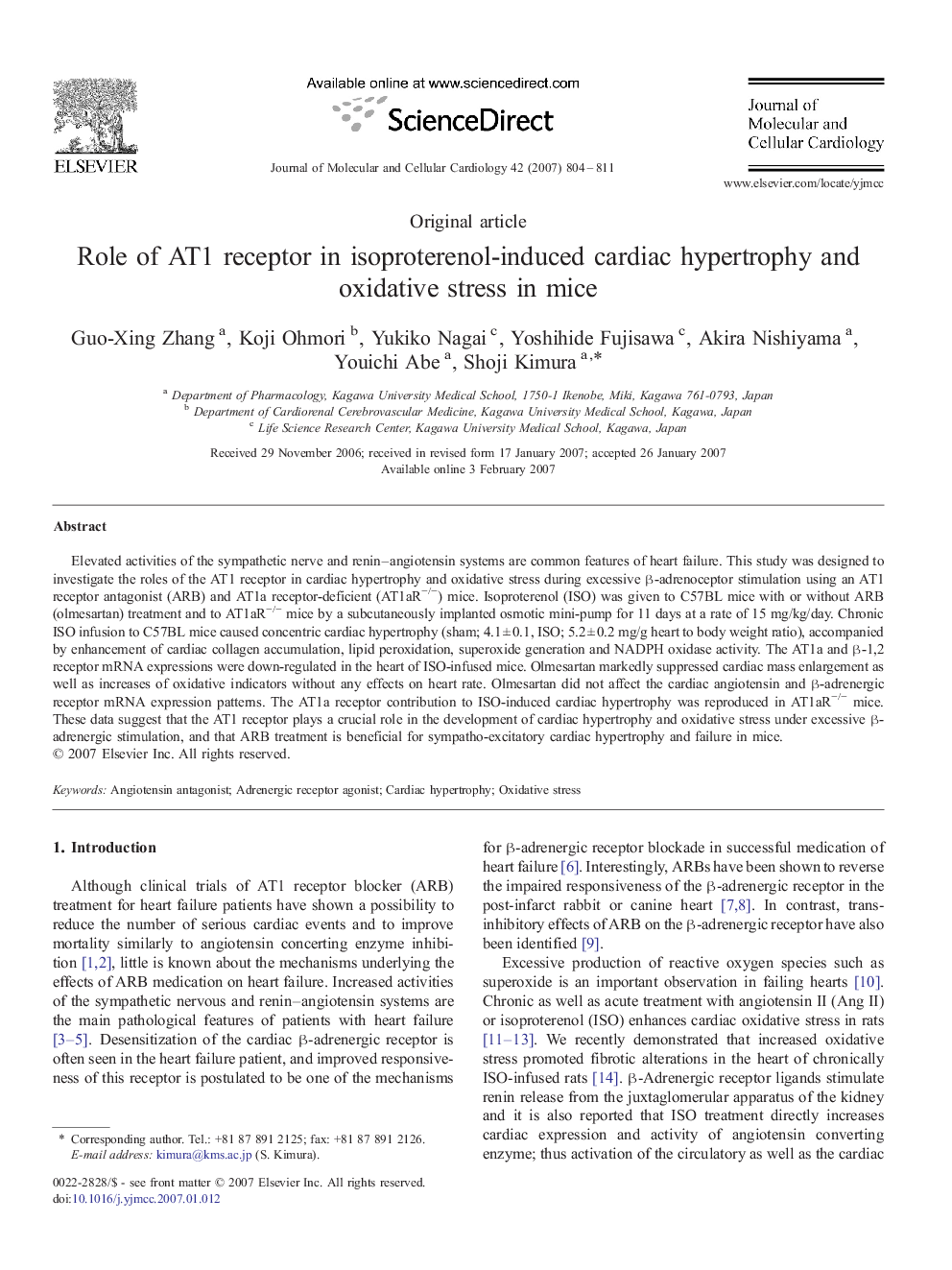| Article ID | Journal | Published Year | Pages | File Type |
|---|---|---|---|---|
| 2192329 | Journal of Molecular and Cellular Cardiology | 2007 | 8 Pages |
Elevated activities of the sympathetic nerve and renin–angiotensin systems are common features of heart failure. This study was designed to investigate the roles of the AT1 receptor in cardiac hypertrophy and oxidative stress during excessive β-adrenoceptor stimulation using an AT1 receptor antagonist (ARB) and AT1a receptor-deficient (AT1aR−/−) mice. Isoproterenol (ISO) was given to C57BL mice with or without ARB (olmesartan) treatment and to AT1aR−/− mice by a subcutaneously implanted osmotic mini-pump for 11 days at a rate of 15 mg/kg/day. Chronic ISO infusion to C57BL mice caused concentric cardiac hypertrophy (sham; 4.1 ± 0.1, ISO; 5.2 ± 0.2 mg/g heart to body weight ratio), accompanied by enhancement of cardiac collagen accumulation, lipid peroxidation, superoxide generation and NADPH oxidase activity. The AT1a and β-1,2 receptor mRNA expressions were down-regulated in the heart of ISO-infused mice. Olmesartan markedly suppressed cardiac mass enlargement as well as increases of oxidative indicators without any effects on heart rate. Olmesartan did not affect the cardiac angiotensin and β-adrenergic receptor mRNA expression patterns. The AT1a receptor contribution to ISO-induced cardiac hypertrophy was reproduced in AT1aR−/− mice. These data suggest that the AT1 receptor plays a crucial role in the development of cardiac hypertrophy and oxidative stress under excessive β-adrenergic stimulation, and that ARB treatment is beneficial for sympatho-excitatory cardiac hypertrophy and failure in mice.
